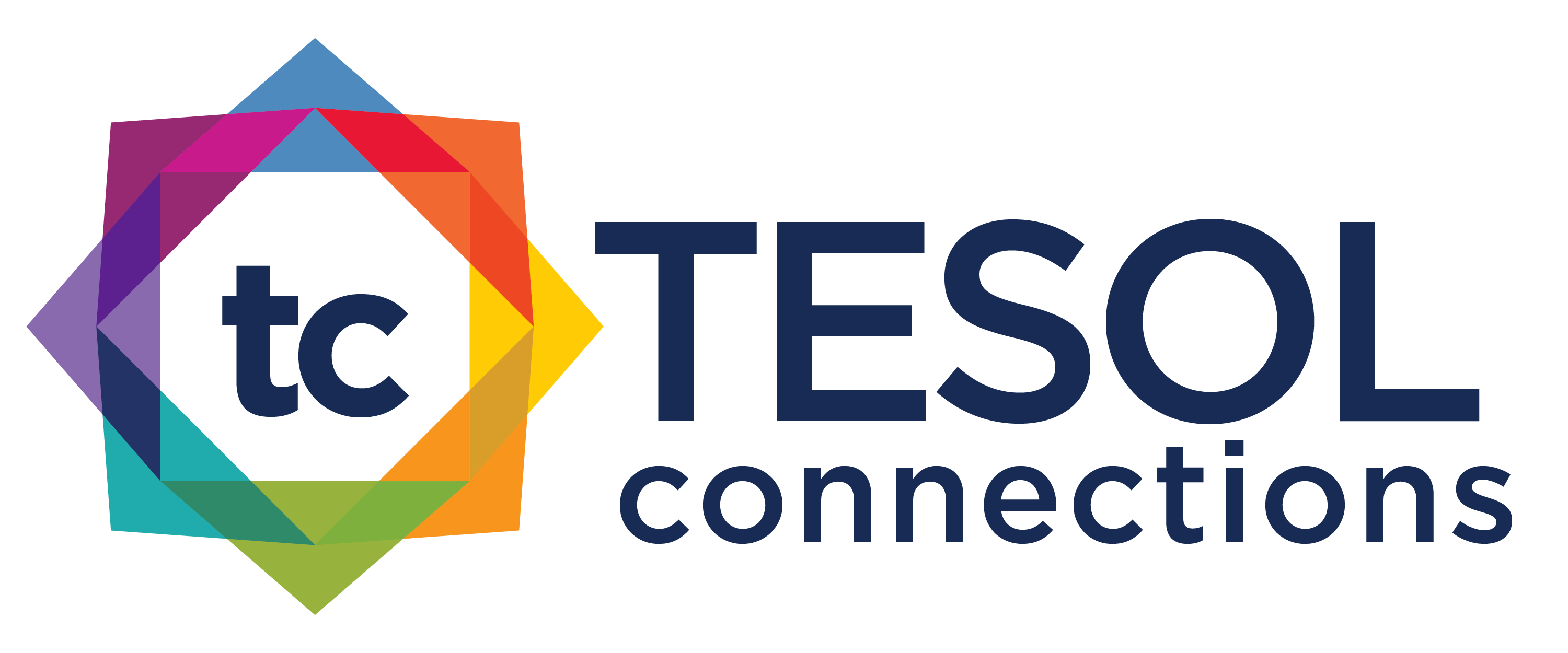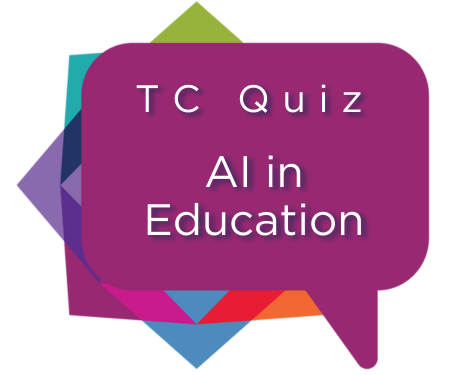KEEPING ENGLISH LANGUAGE PROFESSIONALS CONNECTED
PD Corner
AI Ethics: Empowering Educators to Foster Responsible Use
Ready to embark on an exciting journey through the world of artificial intelligence (AI) ethics? Today, let's dive deep into the realm of artificial intelligence and its profound impact on our classrooms. It's time to equip ourselves with the necessary tools to foster responsible AI use in our teaching practices. In the ever-evolving landscape of education technology, staying ahead is crucial.
AI has seamlessly woven itself into the fabric of our classrooms and our students' academic lives, offering exciting possibilities for personalized learning and heightened student engagement. However, as we enthusiastically embrace these technological strides, it's equally imperative to navigate the ethical landscape that accompanies them. In this article, we delve into practical ways to empower educators to foster the responsible use of AI in English language teaching (ELT) and learning.
Understand the Ethical Quandaries of AI in Education
 Before immersing ourselves in the essentials of professional development (PD), let's acknowledge the ethical considerations surrounding AI in education. AI raises a range of concerns:
Before immersing ourselves in the essentials of professional development (PD), let's acknowledge the ethical considerations surrounding AI in education. AI raises a range of concerns:
-
- data privacy
- algorithmic bias
- depersonalization of the learning experience
- potential for unintended consequences
As ELT educators, it's our duty to transform these challenges into opportunities for ethical and responsible AI use. Our responsibility lies in ensuring that AI serves as a tool that enhances, rather than undermines, the educational journey of our students.
Professional Development: The Key to Ethical AI Integration
PD is a superpower and the key to ethical AI integration. Start by integrating AI ethics discussions into your PD agenda and dare to share your experiences in teacher training instances. Though it's essential to start with the basics, gradually equip yourself and your colleagues with the knowledge needed to comprehend the ethical implications of AI in education. Consider workshops, seminars, or online modules that introduce teachers to the basics of AI, its applications in ELT, and the potential ethical challenges associated with its use. UNESCO’s work on AI in Education offers a treasure trove of information on how AI fits into the bigger picture of sustainable education.
Going to a more practical approach, PD is also an ongoing personal opportunity for learning, action research, and trial and error. If you are to teach your students about the uses, ethics, and limitations of AI, you must first be thoroughly familiar with it yourself. I invite you to explore these specific resources for AI tools that will not only familiarize you with tools similar to what your learners may be using independently, but also help you work more efficiently, develop new skills, and generate new ideas for your classroom practice:
-
- Canva Magic Write: Canva's Magic Write feature offers an AI-powered text-to-image generator aimed at fostering creativity in writing. It provides ideas, helps with brainstorming, and supports lesson planning. It is a useful tool for educators to craft a presentation or other graphics for classroom use.
- OpenAI’s Teaching with AI guide and their FAQ for Educators were created to help educators integrate ChatGPT into their teaching practices. The guide comes with prompts and includes explanations that clarify how ChatGPT works and what its limitations are. It also emphasizes the importance of fact-checking and bias verification.
- Quizizz: Quizizz now has an AI enhancement that can adjust question difficulty, check grammar, and redesign questions to reflect real-world scenarios.
- Slidesgo: Slidesgo provides access to a range of free templates for Google Slides, complemented by an AI Presentation Maker. It enables you to create aesthetically attractive presentations in minutes. Choose a topic; select a tone, such as casual, creative, or professional; make changes; and download your presentation. This tool empowers users to craft visually appealing presentations within minutes.
- Canva Magic Write: Canva's Magic Write feature offers an AI-powered text-to-image generator aimed at fostering creativity in writing. It provides ideas, helps with brainstorming, and supports lesson planning. It is a useful tool for educators to craft a presentation or other graphics for classroom use.
Foster a Reflective Teaching Culture
Practice a reflective teaching culture. Encourage teachers to reflect on their practices, including the use of AI tools, thoughtfully and intentionally. Create spaces for open dialogue where teachers can share their experiences, discuss ethical dilemmas, and collectively brainstorm solutions.
Let's gather in the teachers’ lounge and discuss ethical dilemmas in AI. Share experiences, triumphs, and the occasional epic fails. The ISTE Standards for Educators offers a roadmap for integrating technology in a way that fosters ethical practices and student empowerment. This reflective approach empowers us, educators, to make informed decisions and continuously refine our teaching methods.
Turn Lesson Plans Into Ethical Battlegrounds
Turn your lesson plans into ethical battlegrounds (the good kind!) and incorporate AI ethics into lesson planning. Include discussions about AI ethics seamlessly into your ELT lessons. Here are some ways to do that:
-
- Plan for activities where students make use of an AI tool and provide an array of options for them to choose from.
- Encourage students to stay updated on current events related to AI ethics by assigning them to follow news articles, podcasts, or TED Talks on the subject.
- Allocate time for group discussions where students share their findings, analyze different viewpoints, and reflect on the ethical implications of emerging AI technologies.
- Plan for activities where students make use of an AI tool and provide an array of options for them to choose from.
Teach students how to use AI with academic integrity and provide practical examples of how AI tools can be used responsibly to enhance language learning. For instance, when incorporating AI-powered language learning apps, emphasize the importance of respecting data privacy by keeping your personal information safe and not sharing other people's personal information without permission on the web. When students are engaging with generative AI writing tools, remind students to be careful not to accept content that might hurt or offend people of different backgrounds, traditions, and beliefs.
Stay Curious: Be a Lifelong Learner in the AI Age
AI is an ever-evolving field, and staying updated is essential. Dive into online courses, attend conferences, or join professional learning communities like AI4K12.org to stay ahead of the curve and be part of a community of AI-literate educators.
Build bridges, not walls! Collaborate with AI developers to demystify the magic happening behind the screens. While it might not be common for teachers to have a tech specialist colleague, I've been fortunate enough to have one. Learning with her has significantly boosted my professional skills regarding AI and other tech topics. In addition, platforms like EdSurge give valuable insights into the latest edtech developments, creating opportunities for fruitful partnerships between educators and developers. For example, I recommend that you view this EdSurge webinar: Unlocking the Power of Creativity and AI: Preparing Students for the Future Workforce (note that registration is required).
The following resources offer more valuable insights and practical strategies for educators interested in incorporating AI into their teaching practices:
-
- AI For Everyone by Andrew Ng: This Coursera course is designed for nontechnical learners who want to understand AI and its implications. It covers basic AI terminology, applications, and ethical considerations.
- Google AI Education: Google offers a variety of free resources and courses for educators interested in incorporating AI into their teaching. This includes lesson plans, educational videos, and guides on using AI tools in the classroom.
- Microsoft AI in Education: Microsoft provides free resources, lesson plans, and training materials for educators interested in teaching AI concepts. This includes tutorials on tools such as Microsoft Azure AI and Minecraft AI.
- AI for Education Summit: This virtual conference focuses on AI applications in education, featuring presentations, workshops, and discussions led by experts in the field. It provides insights into using AI tools and technologies to enhance teaching and learning experiences. View the 2024 conference proceedings here (bilingual Spanish and English).
- Common Sense Education: Resources for teaching digital citizenship, including lessons on privacy, security, and ethical technology use.
- AI For Everyone by Andrew Ng: This Coursera course is designed for nontechnical learners who want to understand AI and its implications. It covers basic AI terminology, applications, and ethical considerations.
My Experience With AI
I believe AI is a valuable tool when used responsibly and ethically. In my professional life, I've integrated ChatGPT, which I refer to as The Advisor. Using this technology effectively requires providing clear instructions and guiding it to achieve the desired results. It's also crucial to have expertise in the subject matter to evaluate the final output from ChatGPT. When used responsibly, however, this tool enhances productivity and optimizes creative thinking time.
For instance, I ran this article through ChatGPT, asking for edits to style and language use. I accepted some corrections while rejecting others, as certain suggestions would have changed the intended tone and meaning of the article. It's essential to be knowledgeable and have a clear objective in mind when using and evaluating what ChatGPT (and other chatbots and AI platforms) produces. If we employ AI in our writing, referencing it correctly and transparently is a must.
This process would also work well for teaching your English language writing students the limitations of chatbots:
-
- Students feed their own writing into a chatbot, asking for specific feedback (e.g., sentence structure, grammar, use of a specific language feature, diction).
- Then, students analyze and discuss the relative success of the chatbot's responses and edits.
For professional development, this is a great reflective activity for teachers to practice in training, too!
Conclusion: Navigating the Brave New World Responsibly
As we ride the wave of technological advancements, it's crucial to remember that our primary goal is to create enriching and ethical learning environments for our students. By investing in professional development that specifically addresses the ethical considerations of AI in education, we empower ourselves and our students to navigate this brave new world responsibly.
Incorporating AI into your teaching practices doesn't mean sacrificing ethical principles. It's about finding the right balance and ensuring that our use of technology aligns with the values we hold dear as educators. So, let's embrace the potential of AI in ELT with open arms and minds, all while keeping a watchful eye on the ethical compass that guides us. Let's pave the way for responsible and ethical AI use, ensuring a brighter future for our students.
Happy tech-ing!
Reference
OpenAI. (2023). ChatGPT [Large language model]. https://chat.openai.com
Also In This Issue
‣ Literacy Essentials for K–3 Multilingual Learners
‣ Spotlight on the 2024 TESOL Teacher of the Year: Luis Javier Pentón Herrera
‣ TESOL Turkmenistan Conference Highlights Pedagogical and Digital Innovations
‣ Free TESOL Journal Article: "Learning English Through Manga (Japanese Comic Books)"
Recent TESOL Blogs
‣ 5 Ways to Supercharge Your TESOL 2024 Experience
‣ 30% Happier: The Joys of Biophilia for TESOL Teachers and Their Students
‣ 3 Ways to Use AI for Listening Activities


About the author
Vanessa Mernies
Vanessa Mernies is an academic coordinator at Alianza Cultural Uruguay-Estados Unidos. She holds a TEFL degree from the Alianza in collaboration with the University of Maryland, Baltimore County. Vanessa is a teacher educator, teacher mentor, and materials designer with more than 20 years of experience. She participated in the Teacher-in-Residence Exchange Program in Minnesota in 2019 through Partners of the Americas, and graduated as a Neuropsicoeducador at Asociación Educar, Argentina in 2020.